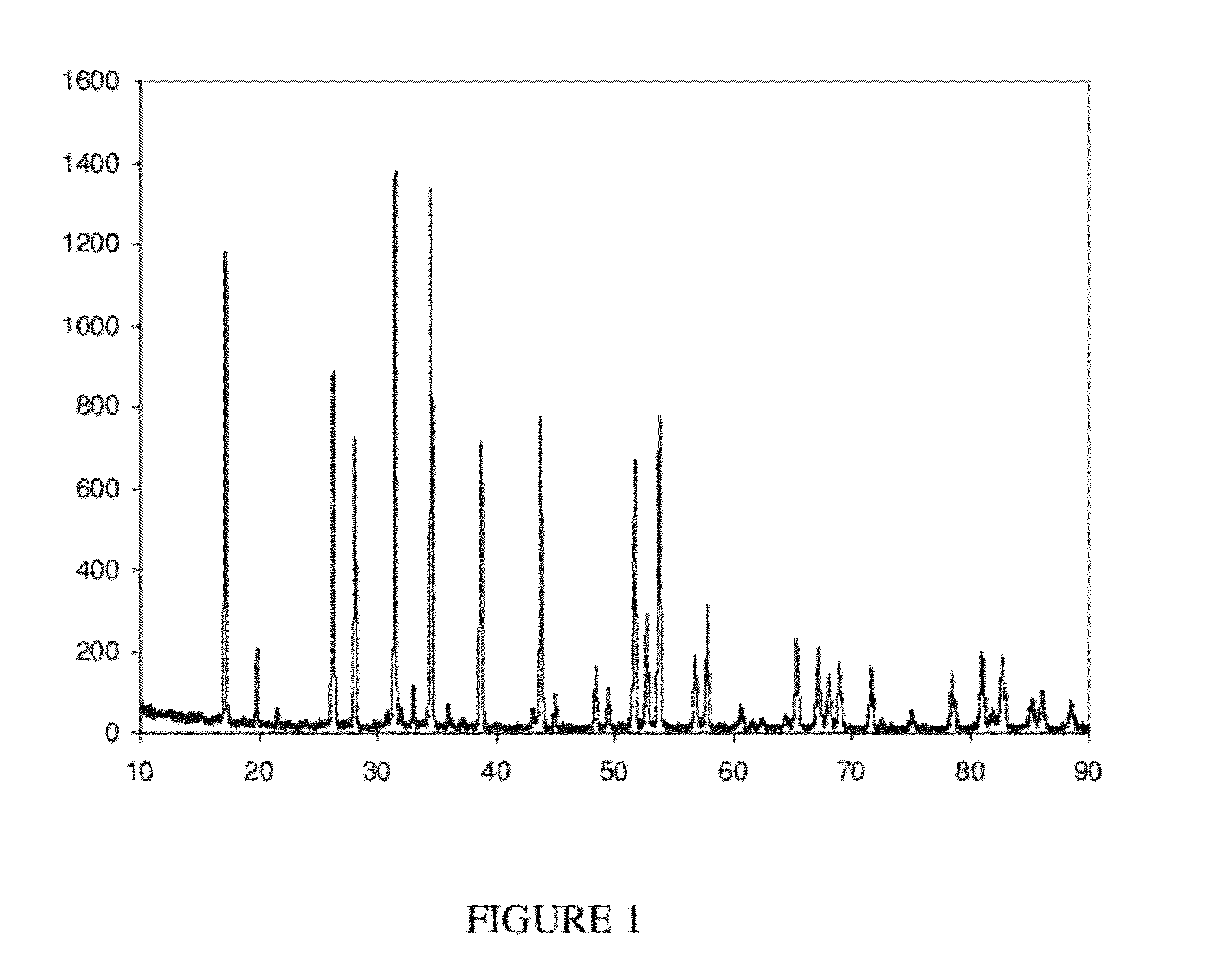Solid lithium ion conducting electrolytes and methods of preparation
a lithium ion and electrolyte technology, applied in the field of solid lithium ion conducting electrolytes, can solve the problems of significant limitation in the integration of lithium ion batteries as electrolytes, inability to adjust or optimize the particle size of solid materials, and inability to render solid materials, etc., to achieve the effect of reducing costs and facilitating scaling up production
- Summary
- Abstract
- Description
- Claims
- Application Information
AI Technical Summary
Benefits of technology
Problems solved by technology
Method used
Image
Examples
example 1
Solution Synthesis of La3Li5Nb2O12 and Analysis Thereof
[0058]A mixture of Nb(OC2H5)5 (0.76 g), La(O-i-C3H7)3 (1.14 g), and LiO-i-C3H7 (0.39 g) in 2-propanol (40 mL) was stirred to obtain a homogenous clear solution. Without being bound by any theory, it is believed that this solution is a mixture of LiNb(OC2H5)6, 3La(O-i-C3H7)3 and LiO-i-C3H7 in approximately a 2:3:3 ratio. In some cases, the clear solution was cooled (e.g., down to −78° C.), while in other cases, the clear solution was kept at room temperature. The stirring was continued until formed solids made stifling difficult or impossible. Upon careful hydrolysis with 0.72 g of water, a white gel was obtained, which, upon drying under vacuum or slow evaporation, furnished a xerogel. X-ray powder diffraction (XRD) analysis showed the xerogel to be amorphous. The pyrolysis of this powder at 600° C. for 4 hours resulted in a crystalline powder, which was identified to be primarily LiLa2NbO6 materials. These results suggest that ...
example 2
Alternate Solution Synthesis of La3Li5Nb2O12 and Analysis Thereof
[0060]The reactants Nb(OC2H5)5 (0.76 g), La(O-i-C3H7)3 (1.14 g), and LiO-i-C3H7 (0.78 g) in 2:3:10 molar ratio were mixed in tetrahydrofuran (THF) and hydrolyzed with water. The resulting gel was dried and pyrolyzed, as described in Example 1, to obtain pure La3Li5Nb2O12. The excess Li(OR) in the reaction mixture was found to be necessary to counterbalance the loss of Li2O during pyrolysis. The sole FIGURE shows the XRD pattern of the product. Employing the Scherrer equation, the particle size has been calculated from the XRD pattern to be 28 nm.
PUM
| Property | Measurement | Unit |
|---|---|---|
| Temperature | aaaaa | aaaaa |
| Thickness | aaaaa | aaaaa |
| Diameter | aaaaa | aaaaa |
Abstract
Description
Claims
Application Information
 Login to View More
Login to View More - R&D
- Intellectual Property
- Life Sciences
- Materials
- Tech Scout
- Unparalleled Data Quality
- Higher Quality Content
- 60% Fewer Hallucinations
Browse by: Latest US Patents, China's latest patents, Technical Efficacy Thesaurus, Application Domain, Technology Topic, Popular Technical Reports.
© 2025 PatSnap. All rights reserved.Legal|Privacy policy|Modern Slavery Act Transparency Statement|Sitemap|About US| Contact US: help@patsnap.com

